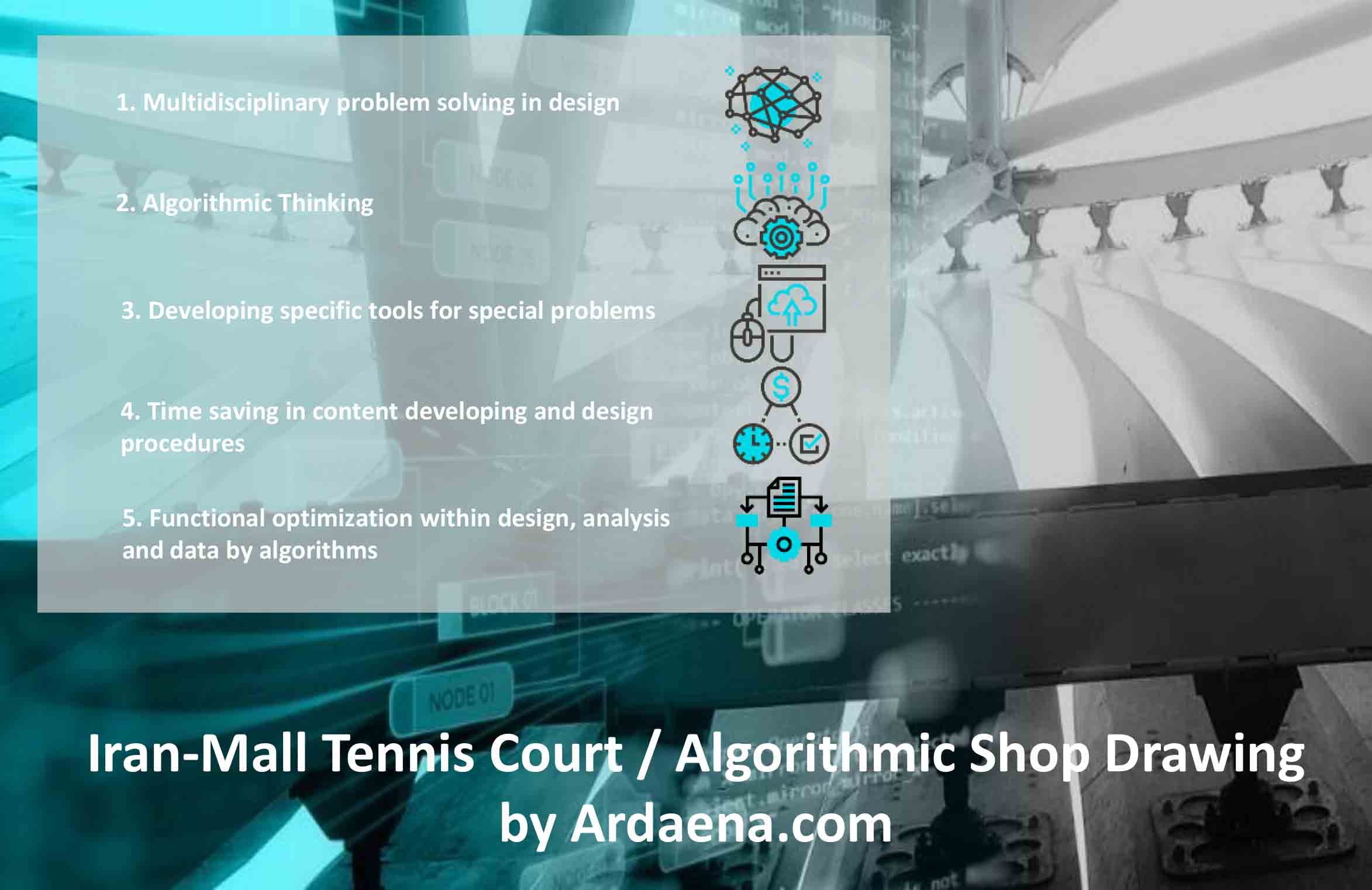
Main Definition
The architectural design needs to be considered as a complex issue to solve. The complexity here is having lots of data layers design can get/set from/to the users and environment which we call them qualification. A designer goes through a huge maze to get to the solution by features like less time and cost but a more accurate one. This is totally like having parameters from different factors and bringing out something to handle the situation. As an example, imagine how a cubic building in dry and hot weather has to be designed adapted to sun exposure. The building needs to have some elements from its original form or material with specifications according to shading. The orientation and overshadowing of the building might be marked as a good checkpoint for the designer to bring the complication simplified and turn the threat to opportunity. While this coagulation could be followed up in other aspects like structure, planning, and accessibilities, the most difficult procedure is to have them all working together as a system. This is a lot to cover where each of these factors has its parameters by specific connections from one to another.
An algorithm is like a definition presenting which parameter is related to others and how this connectivity is going to be applied to the system. The application of each connection is called function and it works like a proportion coefficient intensifies or soothes the function in between. What has been mentioned from parameters, factors, functions and the qualification as the solution we are replying to the problem are exactly the elements of an algorithm. We can define them from different aspects but integrated to have our design more functional. This is not just about design, as we always have reviewed our mindset with design, engineering, and fabrication, using algorithms are amazingly functional to manage data to information.
The experience we got using algorithms
One of our major complicated problems in construction is to have an accurate shop drawing of free form structures. Where every element has to be considered geometrically specified and we need to have also a great approach dynamically adapting itself with different species of shapes and geometries. This is where we used “Grasshopper3D + Python” to have such a problem solved in Iran-Mall Tennis-Court complex façade structure shop drawing. We came up with using different components and codes to manipulate data we had from as-built files toward generating specific spatial elements of façade structure, where every one of them had 7-12.5m length and almost +250kg weight by four different pieces had to be assembled by a linear set of 5mm teeth along with the element. Any mistakes under plus-minus 1mm, wouldn’t let the element pieces install correctly. There were two row-set of 26 spans and we had to check everything mm by mm. This procedure itself was calling to get solved by an algorithm and we did answer to it by a specific one. All it took was 2 lines of the as-built drawing file and everything was unrolled less than 7 clicks afterward neatly. The process reduced us a lot of time-consuming generating and checking of every element and everything went fine.
Every project can be easily divided into a simplified set being managed more conveniently. This could get done by executing algorithmic thinking to have our solution by parameters from different aspects toward specific qualifications. The algorithmic approach will take designers to think procedural and have everything connected while he/she is imagining beyond parameters to get along with aesthetic aspects. If you ask me about, I would prefer to say algorithmic thinking will compromise design, engineering, and construction multi functionally.